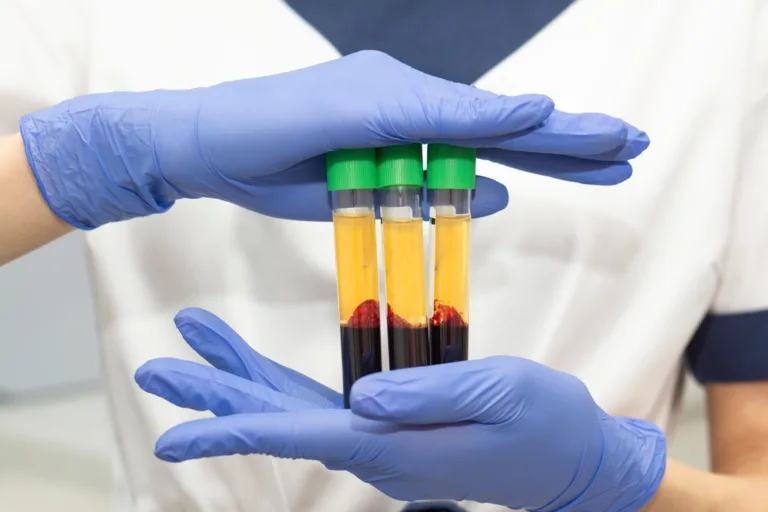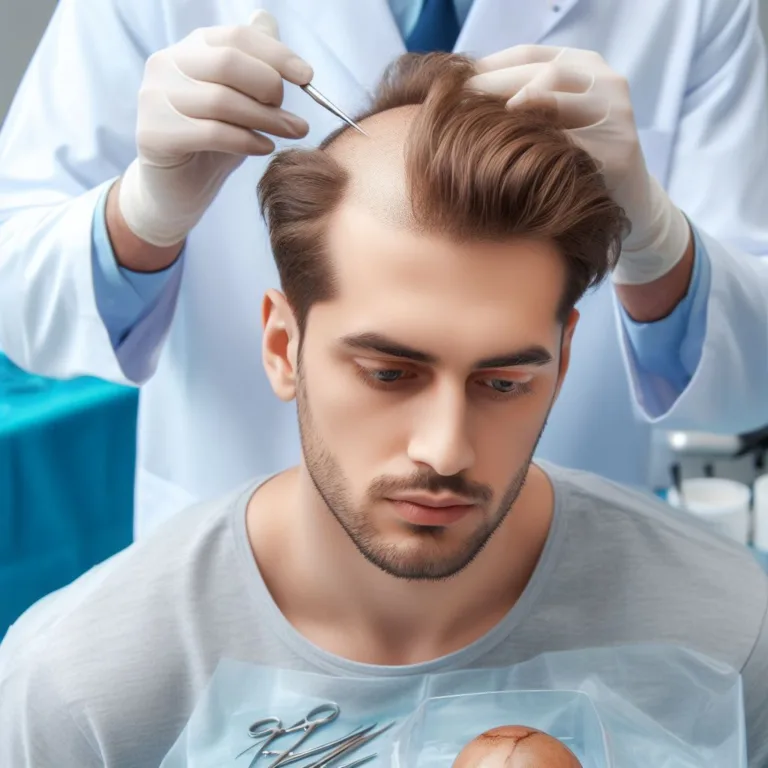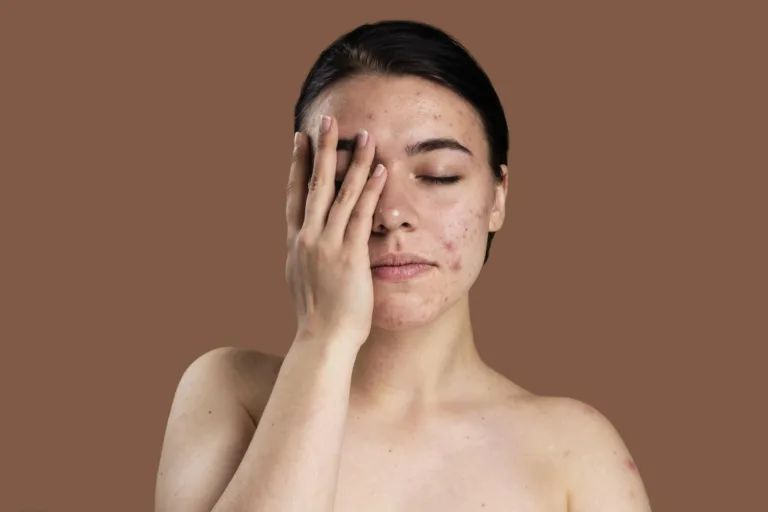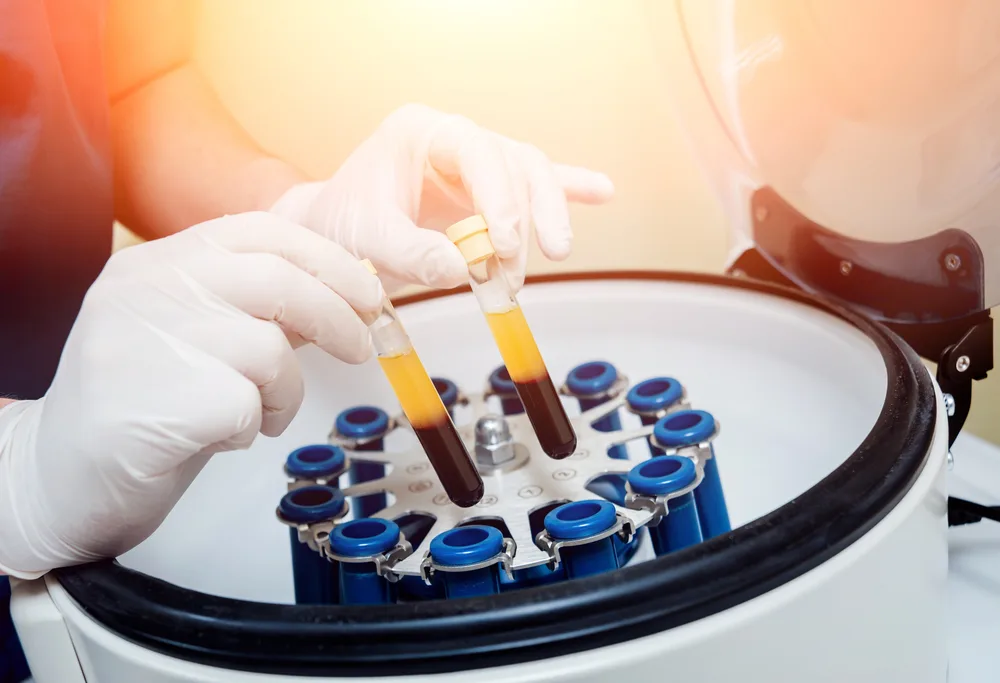
Table of Contents
Introduction
In a quest for eternal youth, people are constantly seeking innovative and effective treatments. One such revolutionary approach is PRP therapy. This article dives deep into the realm of PRP therapy, unraveling its secrets and exploring what is PRP and how it can work wonders in reversing the signs of aging. From its definition to its applications and benefits, this comprehensive guide aims to enlighten readers about the magic of PRP therapy.
I. What is PRP Therapy?
PRP therapy, short for Platelet-Rich Plasma therapy, is a cutting-edge medical procedure that utilizes the healing properties of a patient’s own blood to promote tissue regeneration and rejuvenation. It has gained significant popularity in recent years due to its effectiveness in various fields, including dermatology, orthopedics, and aesthetics. PRP therapy harnesses the power of platelets, which are tiny blood cells responsible for clotting and tissue repair.
A. Definition and Concept
PRP therapy involves extracting a small amount of the patient’s blood, which is then processed to isolate the platelet-rich plasma. This concentrated plasma is packed with growth factors, cytokines, and other bioactive proteins that play a crucial role in stimulating cell growth and regeneration. Once prepared, the PRP is carefully administered back into the patient’s body at the targeted treatment site.
B. The Science behind PRP
The concept behind PRP therapy lies in the remarkable ability of platelets to accelerate healing and regeneration. Platelets contain numerous growth factors, such as platelet-derived growth factor (PDGF), transforming growth factor-beta (TGF-β), vascular endothelial growth factor (VEGF), and insulin-like growth factor (IGF). These growth factors work synergistically to initiate and enhance the body’s natural healing processes, promoting tissue repair, angiogenesis (formation of new blood vessels), and collagen production.
C. Understanding Platelet-Rich Plasma (PRP)
Platelet-rich plasma refers to the plasma fraction of the blood that contains a higher concentration of platelets compared to whole blood. During the PRP preparation process, the blood is typically spun in a centrifuge to separate the different components. This centrifugation step allows for the extraction of the platelet-rich layer, which is then collected and used for therapy. The resulting PRP is a golden-colored fluid that contains a significantly higher concentration of platelets and growth factors compared to regular blood.
PRP therapy’s success lies in its ability to harness the body’s own healing potential. By delivering a concentrated dose of growth factors directly to the treatment area, PRP therapy triggers a cascade of regenerative processes, promoting cell proliferation, collagen synthesis, and tissue rejuvenation.
Through a deeper understanding of PRP therapy, its benefits, and its applications, individuals can make informed decisions about its potential use in various medical and aesthetic procedures.
II. The Process of PRP Therapy
PRP therapy involves a carefully orchestrated process to ensure the extraction, preparation, and application of platelet-rich plasma in the most effective and efficient manner. Understanding the step-by-step process is essential for both healthcare professionals and patients considering PRP therapy.
A. Preparation and Collection of PRP
The preparation and collection of platelet-rich plasma (PRP) is a critical step in the process of PRP therapy. After the patient’s blood is drawn, it undergoes a series of steps to extract and concentrate the platelets and growth factors.
- Centrifugation: The collected blood is placed in a centrifuge machine, which spins at high speeds to separate the different components. Centrifugation allows for the separation of red blood cells, white blood cells, plasma, and platelets. The duration and speed of centrifugation are carefully controlled to ensure the optimal separation of PRP.
- Buffy Coat Extraction: Once the centrifugation process is complete, the PRP layer, also known as the “buffy coat,” is carefully extracted. The buffy coat contains a higher concentration of platelets and growth factors compared to the rest of the blood components.
- Additional Processing: In some cases, additional processing steps may be employed to further concentrate the PRP. This can include techniques such as double centrifugation or using specialized filtration systems to remove any residual red blood cells or contaminants.
B. Administration Techniques
PRP therapy offers various administration techniques depending on the targeted area and the specific condition being treated. The choice of technique depends on factors such as the desired outcome, the depth of tissue penetration required, and the expertise of the healthcare professional performing the procedure.
- Direct Injection: Direct injection involves using a fine needle to deliver the concentrated PRP directly into the treatment site. This technique is commonly used for joint pain and injuries, where the PRP can be injected into the affected joint or tendon to stimulate healing and reduce inflammation.
- Topical Application: Topical application of PRP involves applying the concentrated plasma onto the surface of the skin. This technique is often used in dermatology and aesthetics to improve the appearance of the skin, reduce scarring, or stimulate hair growth.
- Microneedling: Microneedling combines the use of a device with small, fine needles and the application of PRP. The device creates tiny punctures in the skin, promoting collagen production and enhancing the absorption of PRP. This technique is commonly used for skin rejuvenation and scar treatment Such as Derma Roller and Derma Pen.
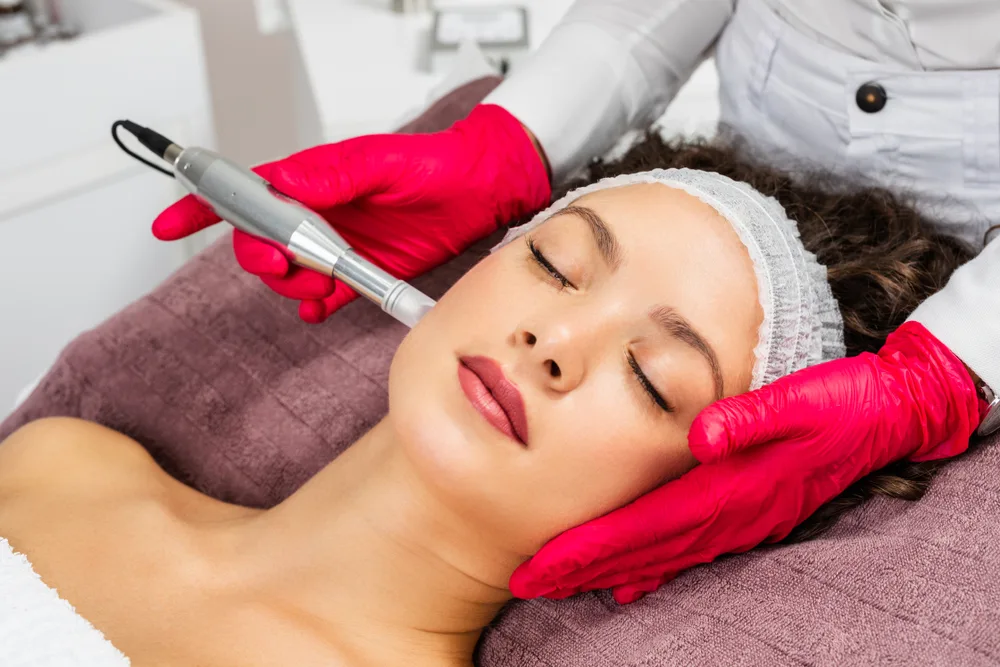

C. Factors Influencing the Treatment
Several factors can influence the effectiveness and outcomes of PRP therapy. Healthcare professionals take these factors into account when designing a personalized treatment plan for each patient.
- Patient Factors: The patient’s overall health, age, lifestyle, and underlying medical conditions can impact the response to PRP therapy. Factors such as smoking, certain medications, and chronic diseases may affect the regenerative potential and healing process.
- Treatment Area: The specific area being treated plays a role in determining the technique and concentration of PRP used. Different tissues and conditions may require varying concentrations and application methods to achieve optimal results.
- Treatment Goals: The desired outcome and treatment goals of the patient influence the approach taken with PRP therapy. Whether the aim is to reduce pain, improve function, enhance aesthetics, or promote tissue regeneration, the treatment plan can be tailored accordingly.
- Treatment Protocol: The frequency and number of PRP therapy sessions can vary depending on the condition being treated and the patient’s response. The healthcare professional will determine the appropriate treatment protocol, including the interval between sessions, to maximize the benefits of PRP therapy.
Understanding the preparation, administration techniques, and factors influencing PRP therapy allows individuals to grasp the intricacies of the treatment process. This knowledge empowers both patients and healthcare professionals to make informed decisions and optimize the outcomes of PRP therapy for various medical and aesthetic purposes.
III. Applications of PRP Therapy
Platelet-rich plasma (PRP) therapy offers a wide range of applications in the field of regenerative medicine. This innovative treatment utilizes the healing properties of concentrated platelets and growth factors found in the patient’s own blood to promote tissue regeneration and rejuvenation. PRP therapy has gained significant popularity in various medical and aesthetic fields, demonstrating promising results for a range of conditions. Three notable applications of PRP therapy include skin rejuvenation, hair restoration, and the treatment of joint and musculoskeletal conditions.
A. Skin Rejuvenation
PRP therapy has emerged as a non-surgical option for skin rejuvenation and enhancement. By harnessing the regenerative potential of PRP, this treatment can address concerns such as fine lines, wrinkles, uneven skin tone, and texture irregularities. The growth factors present in PRP stimulate collagen production, improve skin elasticity, and promote the regeneration of healthy skin cells. When applied topically or combined with microneedling techniques, PRP can revitalize the skin, resulting in a smoother, more youthful appearance. Skin rejuvenation with PRP offers a natural approach to address common signs of aging, with minimal downtime and a low risk of adverse effects.
B. Hair Restoration
For individuals experiencing hair loss or thinning, PRP therapy has emerged as a promising solution for hair restoration. The growth factors present in PRP stimulate hair follicles, promote blood circulation, and enhance hair growth. By injecting PRP directly into the scalp or using microneedling techniques, the concentrated platelets can revitalize dormant hair follicles and promote the growth of thicker, healthier hair. PRP therapy for hair restoration offers a non-surgical alternative to traditional methods, with the potential to improve hair density, texture, and overall scalp health.
Also Read: Discover The Cost Of PRP For Hair Rejuvenation In 2023

10 Celebrities that Done PRP Treatments and Loved It
PRP, or platelet-rich plasma, is a natural and minimally invasive treatment that uses your own blood to stimulate healing…
C. Joint and Musculoskeletal Conditions
PRP therapy has shown considerable potential in the treatment of joint and musculoskeletal conditions, such as osteoarthritis, tendonitis, and ligament injuries. By injecting PRP directly into the affected area, the growth factors and anti-inflammatory properties of PRP can stimulate tissue regeneration, reduce pain, and enhance the healing process. PRP therapy promotes the body’s natural healing response and can provide long-term relief for individuals suffering from chronic joint pain or sports-related injuries. The non-invasive nature of PRP therapy makes it an attractive option for individuals seeking alternatives to surgery or prolonged medication use.
The applications of PRP therapy extend beyond the scope of this article, highlighting its versatility and potential in various fields of medicine and aesthetics. By harnessing the power of the patient’s own blood, PRP therapy offers a natural, safe, and effective approach to address specific conditions and promote tissue rejuvenation and healing. Whether it is for skin rejuvenation, hair restoration, or the treatment of joint and musculoskeletal conditions, PRP therapy continues to pave the way for innovative and personalized regenerative treatments.
IV. Benefits of PRP Therapy
Platelet-rich plasma (PRP) therapy offers a multitude of benefits, harnessing the healing power of the body’s own platelets to promote tissue regeneration and address various concerns. This innovative treatment has gained popularity in both medical and aesthetic fields for its natural and effective approach. The benefits of PRP therapy encompass a range of outcomes, including stimulating collagen production, enhancing tissue regeneration, improving skin texture and elasticity, promoting hair growth, and alleviating pain and inflammation.
A. Stimulating Collagen Production
One of the key benefits of PRP therapy is its ability to stimulate collagen production. Collagen is a crucial protein responsible for maintaining the skin’s strength, elasticity, and youthful appearance. PRP contains growth factors that trigger the production of collagen, promoting the regeneration of healthy skin cells. This leads to a firmer, more supple complexion, reduction in fine lines and wrinkles, and overall improvement in skin tone and texture.
B. Enhancing Tissue Regeneration
PRP therapy is highly effective in enhancing tissue regeneration. The concentrated platelets in PRP contain growth factors that accelerate the body’s natural healing processes. When PRP is applied to damaged or injured tissues, it promotes the formation of new blood vessels and the recruitment of specialized cells, facilitating the regeneration of healthy tissue. This benefit makes PRP therapy a valuable option for individuals recovering from injuries, surgical procedures, or chronic conditions.
C. Improving Skin Texture and Elasticity
PRP therapy has proven to be a game-changer in improving skin texture and elasticity. By stimulating collagen production and promoting tissue regeneration, PRP helps to restore the skin’s natural resilience and smoothness. It can minimize the appearance of scars, uneven skin texture, and stretch marks, resulting in a more even-toned and youthful complexion. The improved elasticity of the skin contributes to a firmer and more lifted appearance.
D. Promoting Hair Growth
Another significant benefit of PRP therapy is its ability to promote hair growth. PRP contains growth factors that nourish hair follicles, increase blood flow, and stimulate dormant follicles to produce new hair strands. By injecting PRP directly into the scalp or using microneedling techniques, it revitalizes and strengthens hair follicles, leading to thicker, healthier hair growth. This benefit makes PRP therapy a valuable option for individuals experiencing hair loss or thinning.
E. Alleviating Pain and Inflammation
PRP therapy has shown promising results in alleviating pain and inflammation associated with musculoskeletal conditions, such as osteoarthritis, tendonitis, and ligament injuries. The growth factors in PRP help to reduce inflammation and promote tissue healing, providing relief from pain and improving joint function. This benefit can significantly enhance the quality of life for individuals suffering from chronic pain or sports-related injuries.
In conclusion, PRP therapy offers a range of benefits that can address various concerns and improve overall well-being. From stimulating collagen production and enhancing tissue regeneration to improving skin texture and elasticity, promoting hair growth, and alleviating pain and inflammation, PRP therapy continues to revolutionize the field of regenerative medicine. By utilizing the body’s natural healing mechanisms, PRP therapy provides a safe and effective solution for individuals seeking to enhance their appearance, recover from injuries, or manage chronic conditions.
V. PRP Therapy for Anti-Aging
In the quest for a more youthful appearance, platelet-rich plasma (PRP) therapy has emerged as a revolutionary treatment option. PRP therapy utilizes the body’s own healing power to combat signs of aging, providing natural and long-lasting results. This innovative approach has gained popularity in the field of aesthetics for its ability to address multiple concerns associated with aging. From reversing wrinkles and fine lines to restoring youthful volume and contour, and minimizing pigmentation and age spots, PRP therapy offers a comprehensive solution for individuals seeking to rejuvenate their skin and defy the effects of time.
A. Reversing Wrinkles and Fine Lines
PRP therapy has proven to be highly effective in reversing the appearance of wrinkles and fine lines. By harnessing the growth factors and regenerative properties of platelets, PRP stimulates collagen production and improves skin elasticity. This leads to a reduction in the depth and prominence of wrinkles, resulting in a smoother and more youthful complexion. The natural approach of PRP therapy ensures that the results are subtle and enhance the overall appearance without compromising facial expressions.
B. Restoring Youthful Volume and Contour
As we age, the loss of volume and contour in the face can contribute to a tired and sagging appearance. PRP therapy offers a solution by stimulating the production of collagen and elastin, which are essential for maintaining skin elasticity and firmness. The regenerative properties of PRP help restore youthful volume and contour, particularly in areas such as the cheeks, temples, and under-eye hollows. This leads to a more lifted and rejuvenated appearance, helping individuals regain their youthful facial features.
C. Minimizing Pigmentation and Age Spots
Pigmentation irregularities and age spots are common signs of aging that can detract from a smooth and even complexion. PRP therapy can effectively minimize the appearance of these skin concerns by promoting cell turnover and improving skin tone. The growth factors in PRP help to reduce the production of melanin, which is responsible for pigmentation issues. Through consistent treatment, PRP can significantly fade age spots, sunspots, and other pigmentation irregularities, resulting in a more radiant and youthful-looking skin.
In conclusion, PRP therapy offers a promising solution for individuals seeking to address signs of aging and achieve a more youthful appearance. By reversing wrinkles and fine lines, restoring youthful volume and contour, and minimizing pigmentation and age spots, PRP therapy provides comprehensive anti-aging benefits. The natural and regenerative approach of PRP ensures that the results are subtle and harmonious with the individual’s features, enhancing their overall facial aesthetics. With its proven efficacy and minimal downtime, PRP therapy continues to redefine the standards of anti-aging treatments, empowering individuals to look and feel their best at any age.
VI. Safety and Considerations
When considering any medical or aesthetic procedure, it is essential to prioritize safety and take necessary precautions. Platelet-rich plasma (PRP) therapy is generally regarded as a safe and well-tolerated treatment option. However, like any medical procedure, it is important to be aware of potential side effects and risks associated with PRP therapy. By understanding these considerations and taking the necessary steps to ensure a safe and effective treatment, individuals can make informed decisions about their PRP therapy journey.
A. Potential Side Effects and Risks
While the risk of adverse reactions or complications with PRP therapy is minimal, it is important to be aware of potential side effects. These may include temporary redness, swelling, or bruising at the injection site. However, these side effects typically subside within a few days. In rare cases, more serious complications such as infection or allergic reactions may occur, but these instances are extremely rare. It is crucial to discuss any concerns or medical conditions with a qualified provider to assess the individual’s suitability for PRP therapy and minimize potential risks.
B. Selecting a Qualified Provider
To ensure the safety and efficacy of PRP therapy, it is crucial to select a qualified and experienced provider. Look for healthcare professionals who specialize in aesthetic treatments and have extensive knowledge of PRP therapy. Consider factors such as their credentials, reputation, and patient testimonials. A qualified provider will conduct a thorough assessment, take into account your medical history and goals, and develop a personalized treatment plan that aligns with your unique needs. By choosing a reputable and skilled provider, you can have confidence in the safety and effectiveness of your PRP therapy experience.
C. Personalized Consultation and Treatment Plan
Each individual has unique concerns, goals, and medical considerations when it comes to PRP therapy. It is important to undergo a personalized consultation with your chosen provider. During this consultation, the provider will assess your specific needs, discuss potential benefits and risks, and create a customized treatment plan tailored to you. This personalized approach ensures that the treatment is optimized for your desired outcomes and takes into account any underlying conditions or sensitivities. By engaging in a comprehensive consultation and establishing a personalized treatment plan, you can enhance the safety and effectiveness of your PRP therapy journey.
VII. The Future of PRP Therapy
As the field of medical and aesthetic treatments continues to evolve, platelet-rich plasma (PRP) therapy is poised to play a significant role in shaping the future of healthcare. Ongoing research and advancements in the field are uncovering new possibilities and expanding the applications of PRP therapy. This innovative treatment approach, derived from the patient’s own blood, has shown promising results in various areas of medicine and cosmetology. By exploring the potential of PRP therapy and its emerging applications, we can gain insights into the exciting future that lies ahead.
A. Ongoing Research and Advancements
The realm of PRP therapy is continually progressing, thanks to ongoing research and scientific advancements. Researchers and medical professionals are conducting extensive studies to further understand the mechanisms behind PRP therapy and refine its application. This research aims to enhance the effectiveness and optimize the delivery of PRP therapy across different medical and aesthetic fields. By delving into the intricacies of PRP therapy, scientists are uncovering valuable insights that contribute to its ongoing evolution.
B. Emerging Applications in Medicine and Cosmetology
PRP therapy is not limited to a single area of healthcare but is expanding its reach into various medical and cosmetology applications. Researchers and practitioners are exploring the potential of PRP therapy in diverse fields, such as orthopedics, dermatology, dentistry, and even veterinary medicine. The regenerative properties of PRP have shown promise in accelerating healing, improving tissue repair, and stimulating cell growth. Additionally, its use in cosmetic procedures has gained popularity, offering natural and non-surgical options for skin rejuvenation, hair restoration, and facial enhancements. As research and clinical experience continue to accumulate, the scope of PRP therapy’s applications will likely expand, revolutionizing the way we approach healthcare.
In summary, the future of PRP therapy is brimming with exciting possibilities. Ongoing research and advancements are unlocking the potential of this innovative treatment, while emerging applications in medicine and cosmetology are reshaping the way we address various health concerns. By staying abreast of the latest developments in PRP therapy, we can anticipate new treatment options, improved outcomes, and enhanced patient experiences. The future holds immense promise for PRP therapy, positioning it as a transformative approach in the field of healthcare.
Conclusion: after knowing what PRP is and how it works, it’s the time now to Unlock the potential of PRP therapy and embark on a transformative journey towards a more youthful and rejuvenated appearance.
What is PRP therapy?
PRP therapy, short for Platelet-Rich Plasma therapy, is a medical procedure that utilizes the patient’s own blood to stimulate healing and rejuvenation in various areas of the body. The procedure involves extracting a small amount of blood, processing it to isolate the platelet-rich plasma, and then re-injecting it into the targeted area. PRP therapy is known for its regenerative properties and has gained popularity in fields such as orthopedics, dermatology, and hair restoration.
Is PRP therapy safe?
Yes, PRP therapy is considered safe when performed by a qualified healthcare professional. Since PRP is derived from the patient’s own blood, the risk of adverse reactions or complications is minimal. However, as with any medical procedure, there can be potential side effects such as temporary swelling, redness, or discomfort at the injection site. It is important to consult with a qualified provider who can assess your suitability for the treatment and ensure proper administration.
How long does it take to see results from PRP therapy?
The time it takes to see results from PRP therapy can vary depending on the individual and the specific treatment area. In some cases, patients may notice improvements within a few weeks, while in others, it may take several months for the full effects to become apparent. It’s important to have realistic expectations and understand that PRP therapy stimulates the body’s natural healing process, which takes time. Your healthcare provider will be able to provide a more accurate timeline based on your unique circumstances.
How many PRP therapy sessions are needed?
The number of PRP therapy sessions required can vary depending on the condition being treated and the individual’s response to the treatment. In general, a series of multiple sessions is recommended to achieve optimal results. Typically, treatments are spaced several weeks apart to allow for the body to heal and respond to the therapy. Your healthcare provider will assess your specific needs and create a personalized treatment plan that outlines the recommended number of sessions.
Is PRP therapy covered by insurance?
PRP therapy may or may not be covered by insurance, as it depends on the insurance provider and the specific policy. In some cases, PRP therapy may be considered an elective or cosmetic procedure and may not be covered. However, if PRP therapy is being used to treat a medical condition or injury, there may be a possibility of insurance coverage. It is recommended to check with your insurance provider to understand the coverage options available to you.
Is PRP therapy painful?
PRP therapy is generally well-tolerated by patients, and any discomfort experienced during the procedure is usually minimal. Before the treatment, a local anesthetic may be applied to the treatment area to minimize any potential pain or discomfort. Some patients may feel a slight sensation during the injection of PRP, but it is typically brief and manageable. Your healthcare provider will ensure your comfort throughout the procedure and can discuss any concerns you may have.
Are there any risks or side effects associated with PRP therapy?
PRP therapy is considered a safe procedure with minimal risks and side effects. Since PRP is derived from your own blood, the chances of an allergic reaction or rejection are very low. However, as with any medical procedure, there are some potential side effects that may occur. These can include temporary swelling, redness, bruising, or mild discomfort at the injection site. Serious complications are rare but can include infection, nerve injury, or tissue damage. It is important to have a thorough consultation with your healthcare provider to discuss any potential risks and to ensure you are a suitable candidate for the treatment.
Can PRP therapy be combined with other treatments for enhanced results?
Yes, PRP therapy can often be combined with other treatments to enhance results. Depending on the specific goals and areas being treated, your healthcare provider may recommend combining PRP therapy with other procedures or therapies. For example, in hair restoration, PRP therapy is sometimes used in conjunction with hair transplant surgery or topical treatments. In dermatology, it can be combined with procedures like microneedling or laser therapy. Combining PRP therapy with other treatments may help optimize the outcomes and provide more comprehensive rejuvenation. Your healthcare provider will assess your needs and develop a customized treatment plan that may involve a combination of therapies for the best results.
References:
- Healthline – Platelet-Rich Plasma (PRP) Therapy: https://www.healthline.com/health/prp
- International Society of Hair Restoration Surgery – Platelet-Rich Plasma (PRP) Therapy: https://ishrs.org/procedures/hair-growth/platelet-rich-plasma/
- What to Know About Platelet-Rich Plasma (PRP) Treatment


